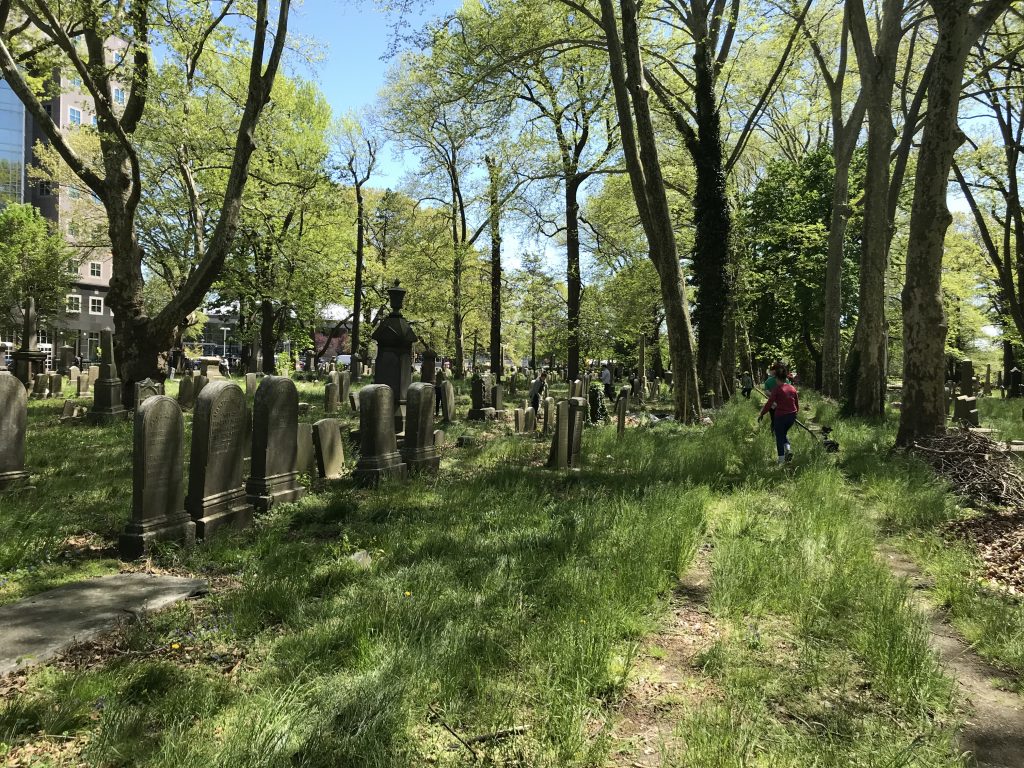Trick or treat! Did you see any spooky ghosts last week? Did it make you wonder about your community’s cemeteries?? Us too! Public, non-sectarian places to bury the dead are a relatively recent addition to the urban landscape in the United States. During the period of rapid urbanization in the early 1800s, the scarcity of space in and around churches available for burials — combined with the need for green space in increasingly smog-filled cities — led to the creation of “garden cemeteries.” Because public parks as we know them today were not yet part of our civic landscape, these new cemeteries provided citizens with a respectful place to bury their loved ones as well as maintained landscapes where families could gather among shade trees and flowering plants to picnic and breathe cleaner air. In the early 1900s, many of these garden cemeteries fell into decline with the rise of public parks dedicated solely to recreation, and later, with the ubiquity of the personal car which enabled suburban memorial parks. With further disinvestment in urban areas in the late 1900s, many urban cemeteries were rendered almost invisible through neglect, theft, and overgrown vegetation.
However, due to recent interest and reinvestment in urban areas, many communities find that their historic cemeteries are underutilized cultural and recreational resources and seek to revitalize these spaces for the 21st century. Challenges often faced by communities include: identifying ownership of the cemetery (many were corporations with the most recent board members having long since passed); funding for restoration of the headstones, landscape, and trees; identifying partners for ongoing maintenance, operations, and programing; and sustaining public interest in the effort once the cemetery is restored.
Many states have State Cemetery Boards to regulate cemeteries that are not owned by a municipal entity or a religious organization and requires that a percentage of lot sales be set aside in an irrevocable trust to maintain the grounds in perpetuity. If the cemetery was operating at the time the Cemetery Board was established, the board should have copies of legal and financial documents.
For cemeteries that stopped conducting burials at an earlier date, information can be obtained through municipal deed searches and historical documents such as death records and obituaries. Your local historical society or public library should be able to assist with this research.
When considering partnerships for fundraising, programming, and recruiting volunteers, don’t limit the search to history buffs! Because of their mature tree canopy, cemeteries are often oases for songbirds and raptors that aren’t often found in the urban landscape, drawing the interest of bird watchers. Likewise, tree lovers will appreciate tall, stately trees that have been able to reach their full potential, without being bound by roads, sidewalks, and new development. As long as the cemetery can be kept safe and accessible, opportunities abound for lunch-time walkers and fitness enthusiasts to bring new life to these formerly “dead” landscapes!



